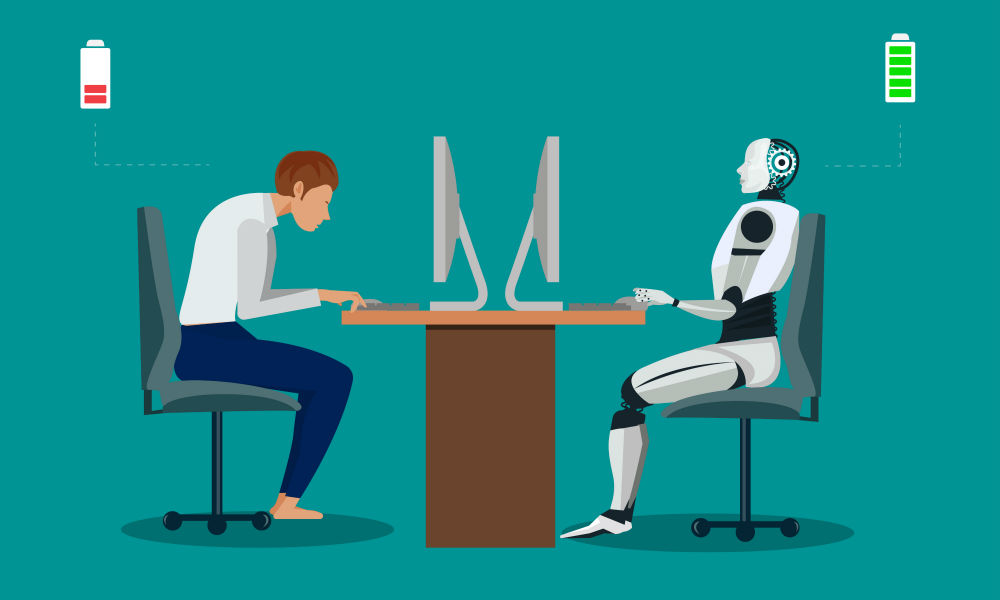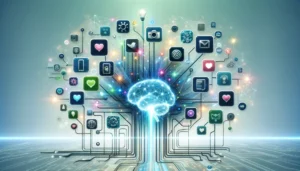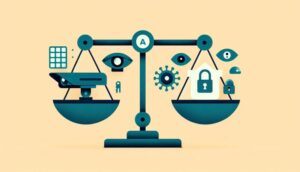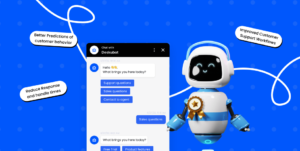Human-AI Collaboration in the Workplace: Embracing the Future of Work

Artificial Intelligence (AI) is increasingly becoming integrated into various aspects of the workplace, revolutionizing how tasks are performed, decisions are made, and productivity is enhanced. However, rather than replacing human workers, AI is augmenting human capabilities, leading to a new era of collaboration where both humans and AI systems work together synergistically. This blog explores the concept of human-AI collaboration in the workplace, its benefits, challenges, practical applications, and the evolving role of employees in this transformative landscape.
Understanding Human-AI Collaboration
Human-AI collaboration refers to the partnership and interaction between humans and AI technologies to achieve common goals and perform tasks more efficiently. AI systems, powered by machine learning algorithms and data analytics, complement human skills by automating repetitive tasks, analyzing large datasets, and providing actionable insights that inform decision-making.
Benefits of Human-AI Collaboration
- Enhanced Productivity:
AI automates routine and time-consuming tasks, allowing human workers to focus on higher-value activities that require creativity, critical thinking, and emotional intelligence. This leads to increased productivity and efficiency across organizations. - Improved Decision-Making:
AI analyzes vast amounts of data at high speeds, offering predictive analytics and data-driven insights that support informed decision-making. Human workers can leverage AI recommendations to make strategic choices and achieve better outcomes. - Personalized Customer Experiences:
AI-powered chatbots, virtual assistants, and recommendation engines enhance customer interactions by providing personalized responses, anticipating customer needs, and delivering tailored recommendations based on individual preferences and behaviors. - Continuous Learning and Skills Development:
Collaborating with AI encourages employees to adapt to technological advancements and acquire new skills, such as data analysis, machine learning, and AI programming. This continuous learning fosters professional growth and prepares workers for future roles in a digital economy. - Operational Efficiency and Cost Savings:
AI-driven automation reduces operational costs, minimizes errors, and optimizes resource allocation within organizations. This operational efficiency translates into cost savings and competitive advantages in a rapidly evolving marketplace.
Practical Applications of Human-AI Collaboration
- Data Analysis and Insights:
AI algorithms analyze large datasets to uncover patterns, trends, and correlations that inform business strategies, market predictions, and operational optimizations. Human analysts interpret AI-generated insights and apply domain expertise to derive actionable recommendations. - Customer Service and Support:
AI-powered chatbots and virtual assistants handle customer inquiries, resolve issues, and provide 24/7 support, enhancing customer satisfaction and loyalty. Human agents intervene for complex queries that require empathy, nuanced understanding, or decision-making. - Process Automation:
AI automates repetitive tasks, such as data entry, document processing, and inventory management, streamlining workflows and reducing manual errors. Human workers oversee AI-driven processes, intervene when necessary, and focus on strategic tasks that require human judgment. - Creative Collaboration:
AI tools assist creative professionals, such as artists, designers, and writers, by generating ideas, optimizing designs, and enhancing content creation. Human creativity and intuition complement AI-generated outputs, resulting in innovative solutions and compelling creations. - Risk Management and Compliance:
AI analyzes regulatory requirements, monitors market conditions, and identifies potential risks or anomalies in real-time. Human experts interpret AI-generated alerts, assess complex scenarios, and implement risk mitigation strategies to ensure regulatory compliance and business continuity.
Challenges and Considerations
- Ethical and Bias Concerns:
AI systems may perpetuate biases present in training data or algorithmic decisions, impacting fairness and equity in the workplace. Mitigating bias requires transparent AI development practices, diverse datasets, and ongoing monitoring of AI outputs. - Skill Gaps and Training Needs:
Employees may require upskilling or reskilling to effectively collaborate with AI technologies and leverage their capabilities. Training programs should emphasize digital literacy, AI proficiency, and adaptive learning to support workforce readiness and engagement. - Integration with Existing Systems:
Integrating AI technologies with legacy IT infrastructure and workflows poses technical challenges, such as data interoperability, cybersecurity risks, and scalability issues. Organizations must invest in robust IT infrastructure and strategic planning to facilitate seamless integration and deployment. - Privacy and Data Security:
AI systems collect, analyze, and store sensitive data, raising concerns about privacy, data protection, and regulatory compliance. Implementing stringent data governance policies, encryption protocols, and access controls safeguards against unauthorized access and data breaches. - Employee Acceptance and Change Management:
Resistance to AI adoption may stem from fear of job displacement, uncertainty about AI capabilities, or reluctance to change established work practices. Effective change management strategies, transparent communication, and employee engagement initiatives foster a culture of trust, collaboration, and innovation.
Human-AI collaboration represents the future of work, where advanced technologies and human expertise converge to drive innovation, productivity, and sustainable growth. As AI continues to evolve and permeate diverse industries, organizations that prioritize ethical AI practices, invest in employee development, and foster a collaborative work culture will thrive in an increasingly digital economy. Embracing the potential of human-AI collaboration enables businesses to harness the collective strengths of both humans and machines, shaping a future where creativity, empathy, and strategic thinking are complemented by AI-driven insights and efficiencies.
Stay ahead with ITBusinessNews – Your trusted source for Technology and Business news. Fast & Precise




